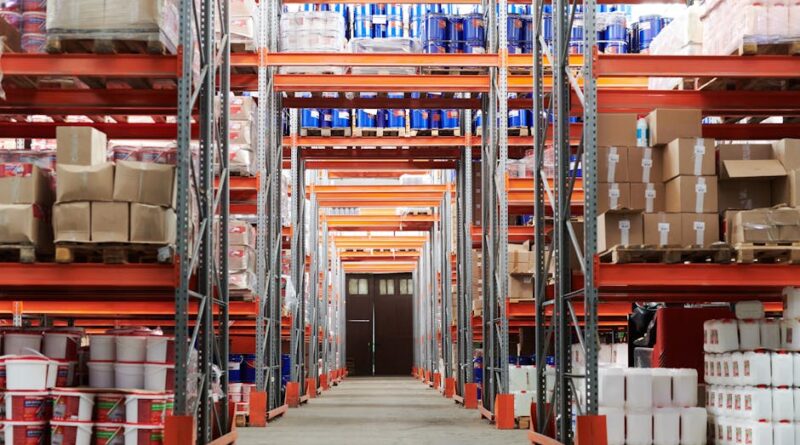Exploring Advanced Packaging Solutions
When we think about products we use every day, from electronics to food items, the packaging plays a crucial role in ensuring their safety, preservation, and presentation. In recent years, advancements in technology have revolutionized the way packaging is designed, produced, and utilized. The world of advanced packaging solutions offers a myriad of possibilities, from smart packaging that interacts with consumers to sustainable materials that reduce environmental impact. In this article, we will delve into the realm of advanced packaging solutions, exploring the innovative techniques, materials, and trends that are shaping the future of packaging.
The Evolution of Packaging
Packaging has been an essential aspect of trade and commerce since ancient times. From early containers made of natural materials like leaves and animal skins to the development of glass and metal containers in the industrial era, packaging has evolved significantly over the centuries. The modern era has seen a rapid acceleration in packaging innovation, driven by technological advancements and changing consumer preferences.
One of the key drivers of change in packaging has been the rise of e-commerce and online shopping. With the increasing demand for convenient and sustainable packaging solutions, companies have been forced to rethink their packaging strategies to meet the needs of a digital world. This has led to the development of advanced packaging solutions that offer improved functionality, aesthetics, and sustainability.
Smart Packaging
Smart packaging is one of the most exciting developments in the world of packaging solutions. By incorporating sensors, RFID tags, and other technologies, smart packaging can provide real-time information about the product’s condition, location, and authenticity. For example, a smart label on a food package can track the temperature of the product during transit, ensuring that it stays fresh and safe to consume.
Smart packaging also allows brands to interact with consumers in new and engaging ways. Augmented reality packaging, for instance, can use a smartphone app to provide immersive experiences, such as product demonstrations or games. This not only enhances the consumer experience but also provides valuable data to brands about consumer behavior and preferences.
Sustainable Materials
As the world grapples with the environmental impact of plastic pollution and waste, there has been a growing emphasis on finding sustainable packaging solutions. From biodegradable plastics to compostable materials like paper and plant-based polymers, there are a wide variety of options available for companies looking to reduce their carbon footprint.
One of the most promising developments in sustainable packaging is the use of recycled materials. By incorporating post-consumer recycled content into packaging, companies can reduce the demand for virgin materials and minimize waste. This not only benefits the environment but also resonates with eco-conscious consumers who are increasingly demanding sustainable products.
Personalized Packaging
In an era of customization and personalization, packaging has become a key element in brand storytelling and consumer engagement. Personalized packaging allows companies to create unique and memorable experiences for their customers, from customizing the packaging design to adding personalized messages or images.
One of the most notable examples of personalized packaging is Coca-Cola’s “Share a Coke” campaign, where the brand replaced its logo with popular names and phrases on its packaging. This simple yet effective strategy not only boosted sales but also created a sense of connection and belonging among consumers. Personalized packaging can help brands stand out in a crowded market and build loyal customer relationships.
Future Trends in Packaging
The future of packaging is filled with exciting possibilities, from edible packaging made from seaweed to self-heating packages that cook food on the go. As technology continues to advance and consumer preferences evolve, the packaging industry is poised for further innovation and disruption.
One of the key trends shaping the future of packaging is the integration of sustainability into every aspect of the packaging lifecycle. From design to production to disposal, companies are increasingly focused on reducing waste, conserving resources, and minimizing their environmental impact. This shift towards a circular economy model will require collaboration across the entire supply chain to create a more sustainable future.
Expert Opinions
According to packaging expert Jane Smith, “The future of packaging lies in creating solutions that are not only functional and practical but also environmentally friendly and consumer-centric. Brands that prioritize sustainability and innovation in their packaging strategies will have a competitive edge in the marketplace.”
Industry analyst John Doe adds, “The rise of e-commerce and changing consumer behaviors are driving the need for packaging solutions that are both secure and sustainable. Companies that invest in advanced packaging technologies will be better positioned to meet the demands of a rapidly evolving market.”
Conclusion
In conclusion, advanced packaging solutions are transforming the way products are packaged, delivered, and experienced by consumers. From smart packaging that enhances product safety and traceability to sustainable materials that reduce environmental impact, the possibilities are endless. As the packaging industry continues to evolve and innovate, companies must stay ahead of the curve by embracing new technologies, materials, and design strategies.
By prioritizing sustainability, personalization, and innovation, brands can create packaging solutions that not only meet the needs of today’s consumers but also pave the way for a more sustainable and connected future. The future of packaging is bright, and with the right strategies and mindset, companies can revolutionize the way we think about packaging in the years to come.


